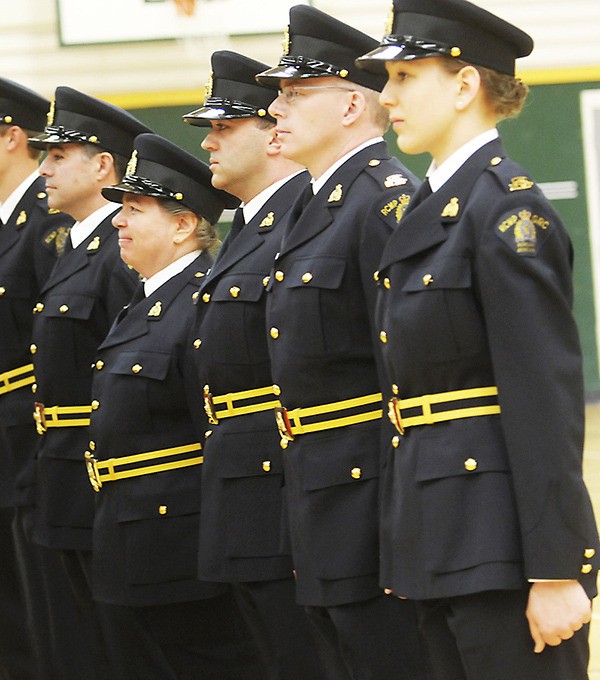A revised RCMP auxiliary police program is being introduced, that will, in some cases, allow the volunteer officers to resume general duty patrols and ride-alongs.
Their uniforms will be altered to underline their volunteer status.
The new three-tier system comes after auxiliary duties were sharply restricted following a year-long review of the fatal January 2015 shooting of RCMP Constable David Wynn at a casino outside Edmonton and the wounding of Auxiliary Constable David Bond.
Tier 1 will see RCMP auxiliaries participate in community policing services, such as public safety education and crime prevention initiatives, under general supervision.
Tier 1 Auxiliaries will not be given peace officer status.
Tier 2 auxiliaries may conduct foot and bicycle patrols, crowd and traffic control duties, training support and delivery, disaster assistance and search and rescue operations assistance.
While Tier 2 auxiliaries will have peace officer status where provincial and territorial legislation permits, they won’t go on general duty patrols (ride-a-longs) and will be under the direct supervision of a regular member of the RCMP.
Tier 3 auxiliaries will carry out the duties of Tier 1 and Tier 2 officers, plus the addition of general duty patrols and check stops.
“These changes have been made based on evidence and extensive, thoughtful consultation,” said RCMP Deputy Commissioner Kevin Brosseau, Contract and Aboriginal Policing.
“I am confident they will improve the program, and contribute to the safety of our Auxiliaries, our police officers and the public we serve.”
The force said new mandatory national training standards will be developed for all three tiers in the coming months.
Uniform options have yet to be finalized, but will include “high visibility garments” with the word “volunteer.”
Among the requirements, applicants most be at least 19 years old, a Canadian citizen with at least a high school diploma.
